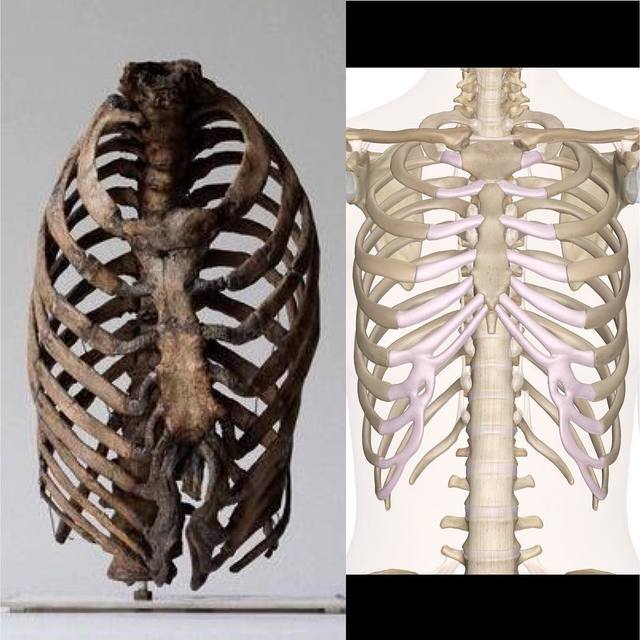

Only by seeing your doctor for evaluation can you be certain of what kinds of tests you might need and which type of breast lump you have. Your breast size and shape may change, or you may notice discharge from the nipple.
MOVABLE LUMP UNDER LEFT RIB CAGE SKIN
Skin covering the lump may look red, dimpled or pitted like the skin of an orange. A breast lump that's painless, hard, irregularly shaped and different from surrounding breast tissue might be breast cancer. A collection of infected fluid (abscess) in breast tissue also can cause a breast lump, one that's often associated with localized breast pain and inflammation of the skin. Doctors describe this condition as fat necrosis.


A severe injury to your breast tissue or nearby nerves can create a breast lump. Factors that may be associated with fibroadenoma growth include being pregnant, using hormone therapy or menstruation. Fibroadenomas are solid, noncancerous breast tumors that are smooth and move easily under your skin when touched. Many women experience fibrocystic breast changes related to their menstrual cycles that tend to improve after the menstrual cycle. With fibrocystic breast changes, you may feel fullness in your breasts with areas of lumpiness or ridgelike areas. A breast cyst may appear before your menstrual period and get smaller or disappear afterward. A breast cyst can be large or small, and the surrounding breast tissue may be tender. If you find a breast lump that feels round, smooth and firm, it could be a cyst - a dilated milk duct filled with fluid. If a lipoma is bothering you, your provider can remove it. Most lipomas aren’t painful and don't cause health problems so they rarely need treatment. Lipomas move easily when you touch them and feel rubbery, not hard.
Skin redness or dimpling like an orange A lipoma is a lump of fatty tissue that grows just under the skin. A large, solid-feeling lump that moves easily under your skin. See more about dog lumps, bumps, and tumorsĪn Expert's Take - Lipomas: Also Known as "Lumps and Bumps"ĭr.If you have an underlying breast condition, you might notice changes in how your breasts normally feel, such as: If you have any questions or concerns, you should always visit or call your veterinarian – they are your best resource to ensure the health and well-being of your pets. There is nothing you can do to prevent your pet from getting lipomas they are a natural part of the aging process for many dogs. While lipomas are not life-threatening, other causes of bumps can have more serious side effects. If you spot any abnormal lump or bump on your pooch, you should contact your veterinarian. In some cases, a lipoma can grow too large and become uncomfortable. If your veterinarian recommends leaving the lipoma alone, it will be important to monitor it for any changes. An ECG to screen for an abnormal heart rhythm that may indicate underlying heart disease. A thyroid test to determine if the thyroid gland is producing too little thyroid hormone. Urine tests to screen for urinary tract infection and other disease, and to evaluate the ability of the kidneys to concentrate urine. Electrolyte tests to ensure your pet isn’t dehydrated or suffering from an electrolyte imbalance. A complete blood count to rule out blood-related conditions. Antibody tests to identify if your pet has been exposed to tick-related or other infectious disease. Chemistry tests to evaluate kidney, liver, and pancreatic function, as well as sugar levels. If your veterinarian recommends surgery, he or she will most likely perform presurgical blood tests to ensure your pet is healthy and can handle the anesthesia and surgical procedure. While lipomas don’t usually pose any serious health threat, removal is sometimes recommended if they limit your dog’s mobility appreciably, or they grow too large, making your dog scratch or bite at them. Your veterinarian will perform a thorough physical exam on your dog and may recommend diagnostic tests to confirm that the lump is a lipoma. They are usually round or oval in shape, form under the skin, and are freely movable and well-defined. Lumps and bumps are the most common signs of a lipoma. The exact cause of these nonthreatening but ugly lumps is unknown they are part of the natural aging process for many dogs. They are the most common type of benign tumor in older dogs-almost every senior dog has at least one. These tumors, while ugly, generally do not pose any health threat to your furry friend. While they can develop anywhere, they are most commonly found on your dog’s undercarriage, in the chest or abdomen. They are soft, easily manipulated, and located just under your dog’s skin. Lipomas are benign (noncancerous), freely movable, relatively slow-growing, fat-filled tumors that are quite common in dogs, especially older ones.







 0 kommentar(er)
0 kommentar(er)
